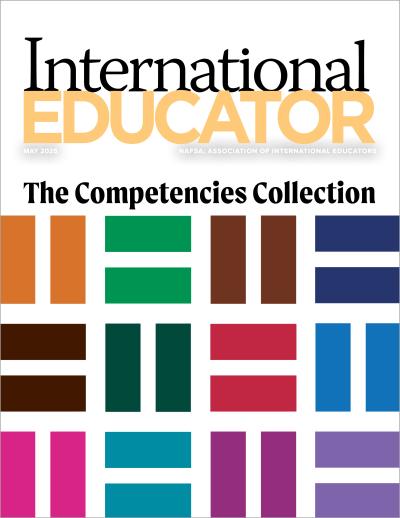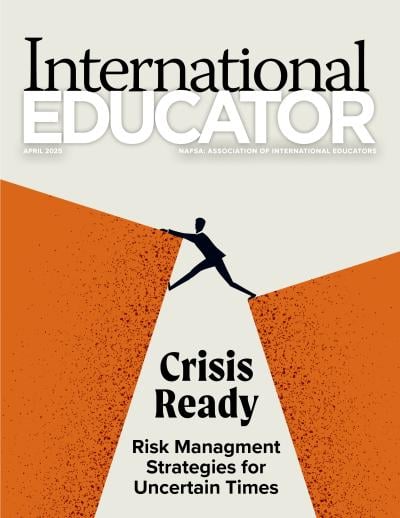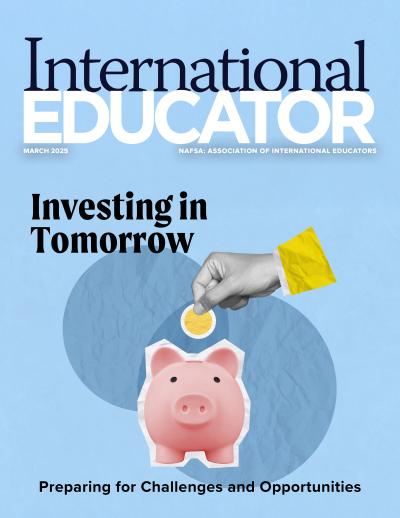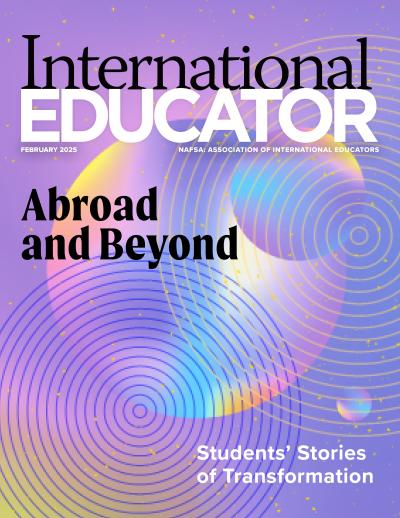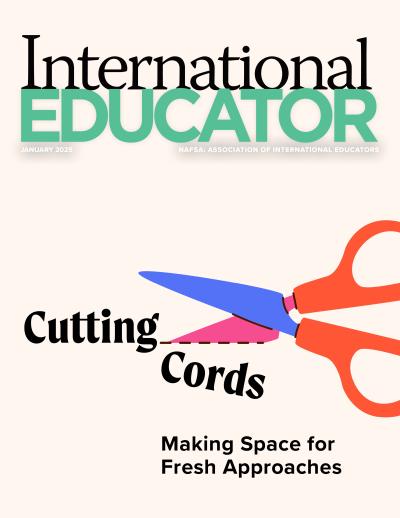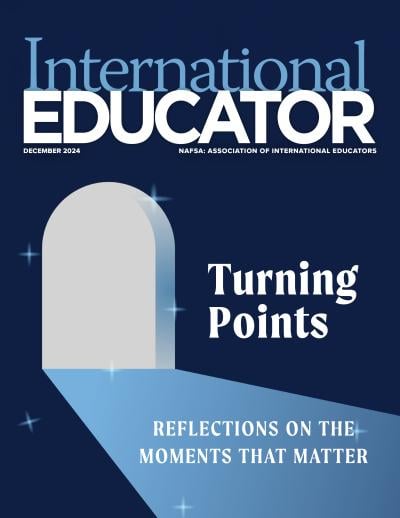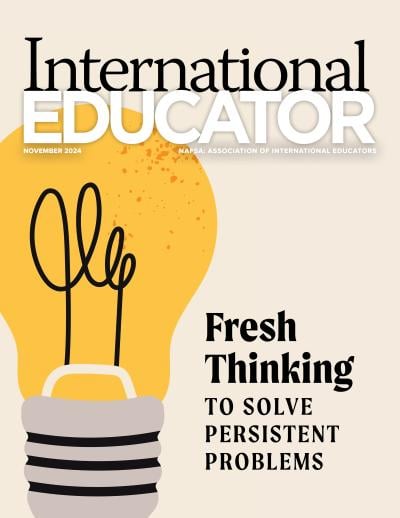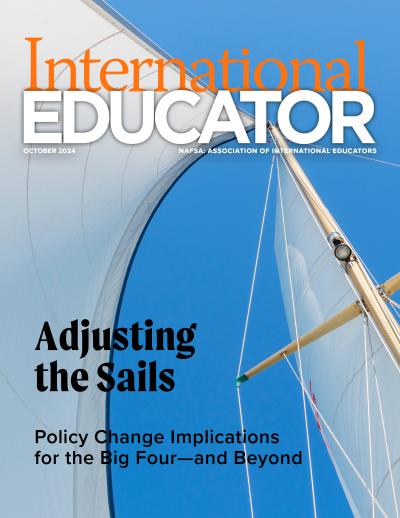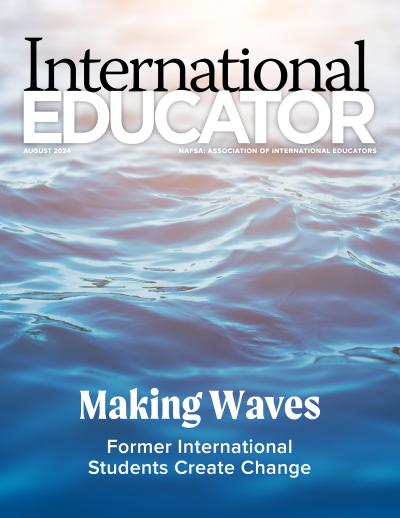Bringing the Global Home
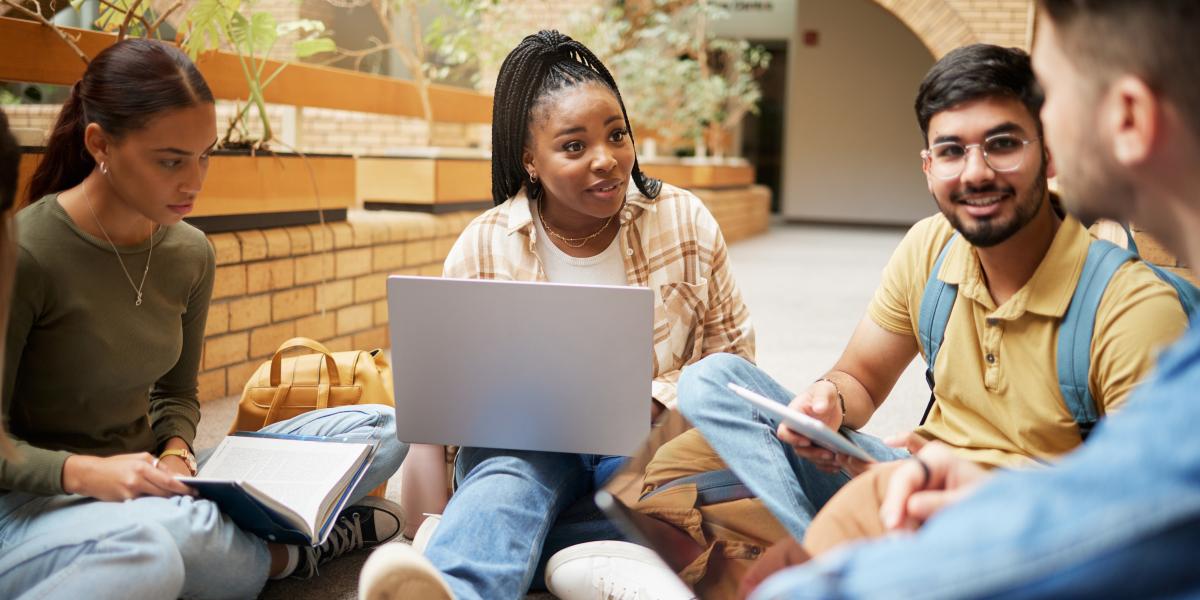
Growing up in Uzbekistan, Dilnoza Khasilova took classes in English and computer skills taught by Peace Corps volunteers. As a student working on her master’s degree at the University of Wyoming in 2014, she seized an opportunity to return the favor, starting free language lessons open to anyone in the Laramie community.
Today, the World Language and Culture Program (WLCP) at the University of Wyoming has student volunteers teaching 25 languages to Laramie residents—though classes are now available via Zoom, expanding the concept of the university’s “community” to anyone in the world.
“It’s become global, but it started by engaging our international students with the community here,” says Khasilova, now a permanent visiting scholar, director of the WLCP, and recipient of the 2024 Hugh M. Jenkins Award for Excellence in Community Programming from NAFSA.
Across the globe, colleges and universities are seeking ways to connect international students with their local communities—efforts that are often driven by students themselves. Sometimes the efforts are highly personal, as in Khasilova’s case, or when Ukrainian students at the University of Tennessee-Knoxville (UTK) held benefit concerts, performed at the Knoxville mayor’s house, and raised funds for relief efforts in their home country in the wake of Russia’s invasion of Ukraine in 2022.
In its many forms, bridging the local and global can help international students, the communities that they live in, and their institutions, ultimately creating self-sustaining cycles of support and benefits.
Benefits for Students
International students are often interested in learning about new cultures—a key driver in their choice to pursue education in a different country—and sharing their own. College-community connections can help them meet both goals.
“It would be a shame to spend two, four, or six years studying in another country and never make friends or learn from the cultural experience,” says Wesley Blood, community coordinator of the Northwest Ohio Baptist Association, who has led a faith-based initiative to connect the international student population at the University of Toledo with the community for nearly two decades. “Sadly, a large number of international students come here and graduate without ever setting foot in an American home. We have determined in Toledo that will not happen.”
Over the past two decades, the university and community organizations have done just that with a variety of programs, including the Toledo International Hospitality Program, which matches families with international students for monthly get togethers; weekly English Corner and Conversation Partner classes; and the Household Items Giveaway, which provides international students with furniture and has been “an amazing way for students to be welcomed to our community,” says Blood, recipient of the 2022 Hugh M. Jenkins Award.
Benefits for Communities
In return, international students can give back to their institutions’ communities by sharing their culture—and their presence. The University of Wyoming’s WLCP is just one of the ways that international students share their culture—others include participating in Laramie’s international festival and volunteering with local nonprofits.
To support these connections, international educators must engage with community organizations to identify opportunities. “Know who is doing what,” Khasilova advises.
International student advisers should stress the importance of real-world experience, as well as the chance for students to share their culture, to encourage students to participate in the community, says Khasilova, who shares her experience by meeting with campus international organizations. Advisers and international student ambassadors can also encourage community involvement during meetings and coffee hours, she adds.
Another way that international students can contribute is by helping local businesses address the “brain drain” found in many college and university communities when domestic students move to larger cities after graduating. While some graduating international students are recruited for internships and sponsored employment by large companies, those who are not can explore the potential of Optional Practical Training (OPT) to help local businesses of all sizes fill hard-to-staff positions, Blood says.
“Most small and midsized employers are unfamiliar with the OPT opportunity that every international student can exercise if they choose,” Blood says. “This often-overlooked opportunity can give students a chance to prove themselves and for local businesses to gain from [the students’] field of research and their global experience. It also gives the students valuable practical work experience to put on their résumés, even if the company does not choose to sponsor them at the conclusion of the OPT. [They] could be an enormous asset to one of these local businesses.”
Benefits for Institutions
For colleges and universities, stronger global-local connections can make institutions more attractive to international students, particularly at a time when it’s becoming more challenging to recruit domestic students.
“When communities work together to engage with international students and help meet their unique needs, it quickly becomes known among the friend-and-family networks of the students. Soon, mainly by word of mouth, a community like Toledo can become known as a welcoming place to stay,” Blood says. “Communities that are friendly toward international students enhance the reputation of the local universities and can become a real selling point for prospective students trying to decide where to invest in their education.”
Over time, these efforts can help internationalize not just institutions but entire communities. “It is not uncommon to discover when speaking to a resident from an international background that they or a family member attended the university,” says Blood. He explains that his community is “a great landing spot for international students, and as the international communities of Toledo grow, that landing becomes even easier.”
International students can also help when the world comes to local communities in other ways. Home to one of the largest Ukrainian populations in the United States, eastern Tennessee has seen an influx of refugees since the beginning of the war, and international students at UTK have been “rolling up their sleeves” to help, says Stephanie Sieggreen, the university’s director of international recruitment.
“We’re the Volunteer State. We want students to be involved and engaged once they get here,” Sieggreen says. •
NAFSA Resources
- Campus and Community Programming Network
Campus Internationalization: Engaging Faculty, Students, and Community
Creating Inclusive Practices for International Students and Scholars to Enhance Wellbeing
Making It Together: How Internationalized Colleges and Universities Contribute as Community Anchors
NAFSA Hugh M. Jenkins Award for Excellence in Community Programming
About International Educator
International Educator is NAFSA’s flagship publication and has been published continually since 1990. As a record of the association and the field of international education, IE includes articles on a variety of topics, trends, and issues facing NAFSA members and their work.
From in-depth features to interviews with thought leaders and columns tailored to NAFSA’s knowledge communities, IE provides must-read context and analysis to those working around the globe to advance international education and exchange.
About NAFSA
NAFSA: Association of International Educators is the world's largest nonprofit association dedicated to international education and exchange. NAFSA serves the needs of more than 10,000 members and international educators worldwide at more than 3,500 institutions, in over 150 countries.
NAFSA membership provides you with unmatched access to best-in-class programs, critical updates, and resources to professionalize your practice. Members gain unrivaled opportunities to partner with experienced international education leaders.





